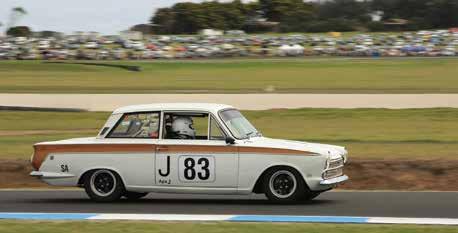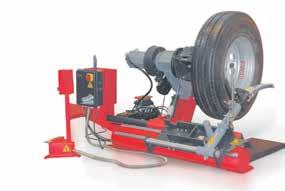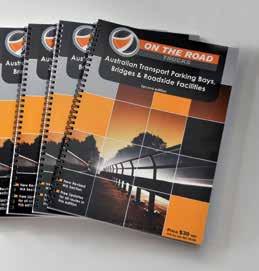
5 minute read
WA Transport History
The History of the West Australian Road Transport Industry
1964
Advertisement

AConcrete Carriers' Section was established on May 13 following exploratory meetings on January 14, 1963 and again on April 22, 1964. There were 31 carriers from the three concrete suppliers — Readymix, Pioneer and Swanmix — at the April 1964 meeting. The contractors felt that by belonging to the Association a voice other than their own would be heard by the three companies. Twenty-six carriers attended the inaugural meeting and G Dickenson was elected Chairman with R Colpitts and W Graves elected to the Committee. The three companies expressed their non-opposition to contractors joining the Association, but reports have filtered back that this was not the case and the Association officer has had to once again approach the companies. One of the major concerns of the contractors was that rates had not increased since 1960.
South Australia is introducing a road maintenance tax on commercial vehicles with a payload of 8 tons or more travelling on SA roads from July 1, 1964. The tax is one third of a penny per ton-mile based on tare weight of the vehicle, plus 40 percent of its carrying weight. Exemptions include berries and other soft fruits, unprocessed market garden and orchard produce (other than potatoes and onions), milk, cream, butter, eggs, meat, fish, flowers and on the return trip, empty containers used on the forward journey for the cartage of any such commodities.
A judgment by the Commonwealth Arbitration Commission in May established 13 weeks of long service leave after a qualifying period of 15 years’ continuous employment in the Federal metal trades and printing trades. New South Wales introduced long-service leave in 1951 by Act whereby all workers get long-service leave of 13 weeks after 20 years. Victoria followed in 1953. Other States and Territories were compelled to follow suit. It was stated in the June-July issue of The Transporter that: “If long-service leave was given at 15 years in WA, it would cost industry £320,000 per year more than it does, with nothing whatsoever to offset this loss. In other words, WA would be very much less able to employ more people — probably young people at that — than it is now.” However, by October, WA had joined the fold.
It was reported that nine million tons of cargo passed through the Port of Fremantle in 1963, with heavy road transporters bearing much of the burden.
Some of the early giants of the iron ore fields were transported north from Fremantle, moving at a “snail’s pace”. Newspaper reports stated that low loaders each carried a 70,000-pound truck to King
By Russell McKinnon
Bay. Each truck weighed 64 tons, but could carry a load of 100 tons. The crew had to improvise on the way with makeshift repairs with one crew using welding gear to repair a broken-down low loader.
The Furniture Removers’ Section attempted an advertising campaign in the West Australian from July 15, but members noticed no increase in business from the adverts two months later, so it was discontinued.
Some statistics: There are 903,619 commercial vehicles on Australian roads, employing 596,750 workers; the transport industry hauled nearly 316 million tons of goods; 2.7 million-ton miles inter-State; buys 681 million gallons of fuel and buys 60,000 vehicles annually.
Metro Tours span the length of the State for the first time by arranging a coach trip to Kununurra, only three weeks after the official opening of its controversial dam project by Prime Minister Robert Menzies.
There was a marked upturn in the movement of freight in and out of WA in 1963. A total of 6140 trucks either used the piggyback rail or travelled the road with a total tonnage of 85,680 tons, an average payload of 14 tons. The return payload from Perth to Eastern States was an average of 6.4 tons at 39,180 tons — an increase on the previous year’s 17,890 tons.
A move by school bus contractors to gain a retaining allowance during school holiday periods was dashed by the Education Department..
ASSOCIATIONS
LIVESTOCK AND RURAL TRANSPORT ASSOCIATION OF WA
THE VOICE OF WA RURAL TRANSPORT SINCE 1980 - PROMOTING SAFETY, PRODUCTIVITY & EFFICIENCY
Membership Enquiries T: 08 9478 3655
TYRE EQUIPMENT AUSTRALIA
YOUR ONE STOP TYRE EQUIPMENT SUPPLIER

TRUCK TYRE CHANGER
18/9 Inspiration Drive Wangara WA 6065 PHONE: NEVILLE BAKER 0419 515 151 www.tyreequipment.com.au sales@tyreequipment.com.au REPAIRS

YOUR SPACE This space could be your spot to reach over 12,000 readers in the Western Australian transport and associated sectors.
Contact Karen at Karen@angrychicken.com.au or Ph 08 9296 4488
ON THE ROAD TRUCKS
The ‘must have’ book for transport operators giving you the locations Now available in DIGITAL format $30 (distances) of Transport Parking The ‘must have’ publication for anyone in the transport industry requiring Bays, Bridge information, roadside the locations (distances) of transport parking bays, bridge information, facilities and their services roadhouses and their facilities and dirt tracks suitable for parking throughout throughout mainland regional mainland Australia. Australia. PRINT or use on your TABLET
HARD COPIES NOW AVAILABLE ~


$ 40 EACH
Hurry Limited copies left On the Road - Trucks is now available in high resolution PDF format which means you can use it on your Only $30 plus postage TO ORDER Having trouble finding space in rest areas? WA GRAVEL TRACKS in this edition TABLET as well as print it. You will be sent an invoice with EFT details, and once payment is received the book (6mb) will be emailed to you. To order: Email this form to karen@angrychicken.com.au
visit www.angrychicken.com.au karen@angrychicken.com.au • Ph 08 9296 4488 Name ........................................................................................................................................................................................Company Name................................................................................................................................................................. Address (for invoice) ..............................................................................................................................................................................................................................................................................................................................................................









